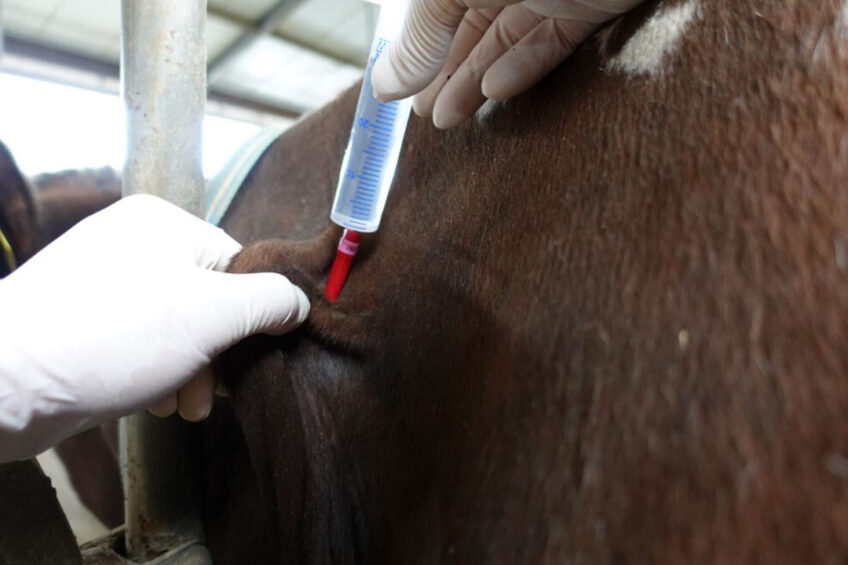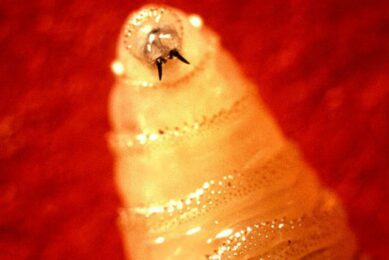UK dairy herd vaccinations guideline provides new vision

Trade industry organisation, the National Office of Animal Health (NOAH), has launched the Livestock Vaccination Guideline providing support to vets, farmers and SQPs to help improve the health and welfare of UK dairy, beef and sheep and support farm resilience and sustainable improvements in productivity.
Preventing and controlling diseases on-farm has never been more important in the face of new agriculture policies, evolving disease challenges, new trading arrangements and the urgent need to meet environmental sustainability goals in response to climate change. A preventative health approach for UK livestock, supported through vaccination, is an integral part of this, says NOAH.
“…livestock vaccinations could provide huge benefits…”
Dawn Howard, NOAH chief executive, said livestock vaccinations could be complex but provided huge benefits, not just for animal health and welfare but also had a positive impact on food, economic and job security in the UK: “Having the right tools, medicines and technology to provide adequate prevention, diagnostics, monitoring and treatment has never been more important.”
Jonathan Statham, dairy author and chair of the Animal Health and Welfare Board for England, said single-agent infectious diseases generally represented a threat to all herds, including the very best managed, whereas multifactorial conditions may have less indication for vaccination programmes in herds where management conditions effectively reduce disease risks.
Dairy herd diseases
The report lists Bovine Viral Diarrhoea (BVD), Infectious Bovine Rhinotracheitis (IBR), Leptospirosis, BRD and calf scour in the category one (highest priority vaccinations considered highly important in dairy herds). Multifactorial diseases include mastitis and clostridial diseases.
The between herd prevalence of active BVD infection in the UK is estimated to be 20% and the cost of the disease to the UK dairy and beef sectors is around £40 million with the mean cost per cow per year £46.50, mainly down to fertility losses.
Statham said vaccination of female, adult breeding stock to protect them from viral infection during pregnancy was the central pillar of BVD control, alongside testing, identifying, and removing persistently infected (PI) animals from herds. Vaccination also reduces the incidence of infertility associated with BVD infection, and reduces adverse clinical effects seen in acutely infected youngstock, such as a rise in temperature, reduced immune cell count and subsequent virus shredding. But vaccination is only currently undertaken in 45% of eligible stock in the UK.
“Infection can be a barrier to international trade in livestock and semen.”
IBR is a respiratory disorder caused by bovine herpesvirus type 1 (BoHV-1) but also causes poor fertility and a fall in milk production with the virus establishing a lifelong latent infection in individuals which can be reactivated and spread during times of stress. Infection can be a barrier to international trade in livestock and semen. In the UK, BHV-1 is estimated to be present in 70% of herds, costing £36 million a year. Subclinical infection is estimated to cost £200/cow/year to dairy herds in lost income because of reduced milk yield.
Control measures are effective and eradication possible
Statham said control measures, including vaccines, are effective and eradication is possible over time. But currently only 22% of eligible cattle are vaccinated against the disease and “a much higher uptake would be required to achieve this aspiration. As well as reducing clinical disease and spread, vaccination has been shown to improve fertility, increase milk production and reduce culling.”
Leptospirosis in cattle is caused by the organisms collectively referred to as Leptospira hardjo. There are 2 serotypes and up to 60% of British farms may be infected. The bacteria area present in the reproductive tract and kidneys and spread of infection is from cow to cow via urine, foetuses and uterine discharge and from bull to cow via infected semen. The disease can cause a milk drop syndrome and Leptospirosis can cause infertility and abortions, which usually occur 6-12 weeks after the dam is infected.
Statham said there are 2 vaccines available that contain either Hardjo bovis or Hardjo prajtino strains. Both vaccines will control abortion and improve fertility in endemic herds.
Concluding his report on the dairy sector, he said: “Many disease conditions can be avoided or minimised by using management practices that reduce exposure to the disease, lower stress and include good hygiene and biosecurity.
“Vaccination programmes are an important element in a comprehensive, well-planned herd health control strategy. Vaccination can eliminate or reduce treatment costs, as well as preventing the reduction in growth, milk production or fertility that may otherwise result. Treatment of disease is not as effective or as economical as prevention,” he added.
The NOAH report can be found here.
Join 13,000+ subscribers
Subscribe to our newsletter to stay updated about all the need-to-know content in the dairy sector, two times a week.










